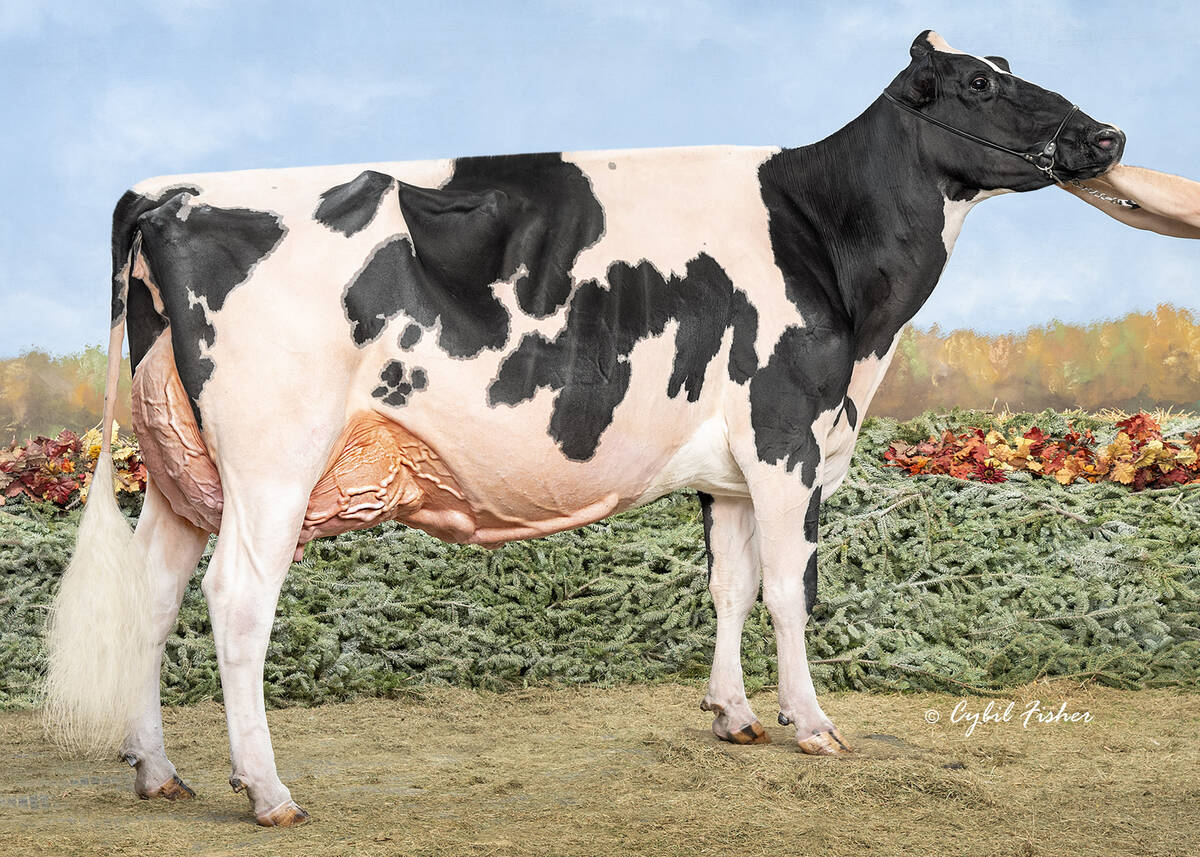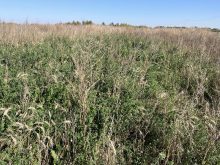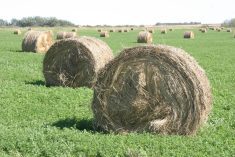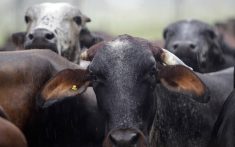GREELEY, Colo. – The first impression of the Kunar Feed Yard is one of overwhelming size, where the only view in any direction is pens full of cattle stretching out to the horizon.
This is a modern, corporate-run feedlot in the heart of cattle country on the high plains of Colorado.
It’s efficient, it’s clean and its single purpose is to fatten 85,000 cattle at a time for one of the American packing houses owned by Cargill’s Excel, IBP, National Beef or ConAgra.
Owned by the Monfort division of ConAgra since 1987, this lot employs 85 full-time staff. Eighty percent of them are on site at any given time, said yard manager Don Anderson.
Read Also

Saskatchewan dairy farm breeds international champion
A Saskatchewan bred cow made history at the 2025 World Dairy Expo in Madison, Wisconsin, when she was named grand champion in the five-year-old Holstein class.
The corporate image starts in the farm office with its posh interior filled with professionally tended plants, wall-to-wall windows that show nothing but cattle, a large sunny cafeteria and a staff trophy case full of brass from golf, softball and basketball tournaments.
Monfort was established by Warren Monfort in 1930. A family-run operation, the Monforts were among the first to develop the feedlot system and were the first to open a feedlot with a capacity to feed 100,000 head at a time.
About 60 percent of the cattle at this lot are custom fed. The company owns the other 40 percent, said Anderson.
“Contrary to popular belief, no one has to sell to ConAgra,” said Anderson to a group of visitors from the National Cattlemen’s Beef Association.
Buyers are there every week from Excel, IBP and National Beef to bid on cattle.
This yard is in the middle of irrigation country. It’s flat land, speckled with pump jacks and oil storage batteries set against a Rocky Mountain backdrop.
Anderson, who has worked for ConAgra for 11 years, said this location was picked for the ample water supply, as well as mild winters and tolerable summers.
Since the weather is mild, the pens are made of wooden rail fences with no wind barriers. Pen size is based on 150 to 160 sq. feet per animal.
During hot summer weather, a sprinkler system cools the cattle.
Mud is a big problem because the region periodically receives heavy dumps of snow that melt quickly. Each pen is built up substantially in the centre for drainage.
Nothing left to chance
With this many cattle on feed, organization is critical.
There are two fed cattle loading areas and a third is being built. Cattle liners roll into the yard every five minutes to either bring in calves or take out those which are finished. At the same time, manure trucks head out to the compost piles. All manure is composted in a wood chip or straw mixture.
Upon arrival, calves are settled into a special holding area Anderson calls the Motel 6. During their 24-48 hour stay, they are checked and sorted.
At one time the cattle arrived at about 800 pounds but are now coming in at 650 lbs. and fed for about 120 days on a diet of fresh flaked corn, ground alfalfa, corn silage and tallow.
“The cattle seem to do a little better on that fresh, flaked product,” said Anderson.
Black cattle are the majority in almost every pen.
“We used to sort by breed and color but now sort by frame and flesh types,” said Anderson.
The feedlot favors a Charolais, Angus or Limousin type animal. However, hide color is not necessarily a factor in quality.
“We know there is a lot of variation among breeds and we know that the blacks (in the pens) are not all Angus,” said Anderson.
The feed demands are huge. This lot alone contracts 10,000 acres of corn for silage each year. Each of the three silage pits holds 65,000 tonnes. They also have a 54 car-unit train to bring in corn when the price is right.















